
Shane – 1953
This was an OK movie. It wasn’t great, but it also wasn’t bad. It was altogether average. Some things were good, like the cinematography, the costume design, and the music. But other things were lacking, like some of acting, the lighting, and the fact that the film had a lot of set up for a climax that was far too short.
Alright, I’ll start with the good things. The story took place in Wyoming, and cinematographer Jack Schaefer took home an Oscar for his work on the film. He really did a great job of showing of the natural beauty of the landscape. Plus it was filmed in Technicolor, giving him a wonderful pallet with which to work.
The costume and set design was spot on. At first I was a little confused by Shane’s costume. I was expecting a western and his outfit looked like it belonged in a film about Louis and Clark. But upon reflection, the film’s plot took place in 1892 This was a period of transition, when the trappers, traders, and explorers were becoming ranchers and farmers. The film was definitely a Western, but had more to do with frontier pioneers and less to do with classic cowboys.
The story was really about a group of farmers who owned land next to a mean old cattle rancher named Rufus Ryker, played by Emile Meyer. The unspoken leader of the farmers was Joe Starrett, wonderfully played by Van Helfin. Ryker gathered a group of friends and brutally oppressed the farmers, trying to drive them and their families off their land so he could have it for himself. The farmers were all men of peace and did little to fight back.
Then along came Shane, played by Alan Ladd. He was the strong and silent type with a dark past as a dangerous gun-slinger. He showed up and became a farm hand for Joe, trying to leave his past behind him. He meets Joe’s wife, Marian and his little boy, Joey, played by Jean Arthur and Brandon deWilde. The child falls in love with Shane as only a young and innocent youth can. Even Marian falls in love with him, though maybe just a little too much. It was a little awkward, but that was on purpose because it becomes a minor plot point in the latter half of the film.
Shane raises his fists to defend the oppressed farmers, making an enemy of Ryker. Despite that, everything seems to be going alright until Ryker hires a cold-blooded killer named Jack Wilson, played by Jack Palance to help him drive off the farmers. When Wilson murders one of the farmers, the game is up and the peaceful farmers start packing up their belongings.
But here is where the filmmakers seemed to drop the ball. The big climactic gun fight at the end lasted for all of ten seconds, if that. It was over so quickly that it was almost anticlimactic. Incidentally, the DVD provided that film’s original trailer, which I watched. The entire gun-fight was included in the trailer, so if I had watched that first, the ending would have been ruined for me.
Another thing that really got on my nerves about the movie was the little boy, Joey. Now, I know that there was a certain amount of realism in his whiney voice, dialogue, and behavior, but he was so incredibly annoying that I was hoping he would get killed by a stray bullet. Every time he called out with that high-pitched, sing-song, “Shaaaaain?” I wanted something bad to happen to him.
This is the first movie in which I have not rolled my eyes at Jean Arthur’s performance. I have never been a huge fan of her acting, but here she played a more dramatic role that had a little realism and depth so I applaud her for a job well done. My research uncovered an interesting tidbit about her participation in the film. This was the first film she ever did that was in color, but it was the last feature film she was ever in.
The lead, Alan Ladd did a good enough job, though his character was a little one-dimensional. But it was his final parting words to little Joey that I found interesting. He said “There’s no living with a killing. There’s no goin’ back from one. Right or wrong, it’s a brand… a brand sticks.” In other words, a tiger can’t change his stripes? I disagree, Mr. Shane. You were put into a bad situation, but now that it is over, there is no reason you can’t settle down. Oh well.
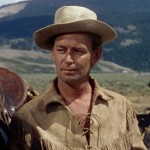
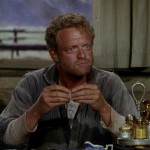
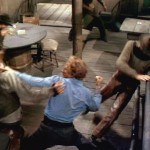
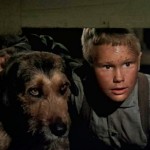
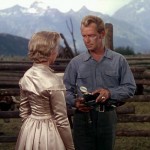
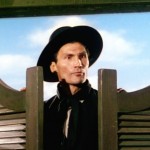
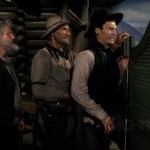
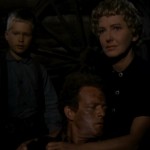
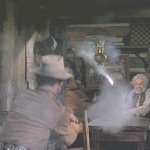
You mention the film was set in 1862. I have the book ‘ Shane ‘ & the opening line is ‘ He rode into our valley in the summer of ’89 ‘. Not a major issue but thought it worth drawing your attention.
Aaaargh! Typo!! Thanks for catching it, Geoff! I have corrected the date to 1892. Per Wikipedia, “The basic plot elements of Shane were derived from the 1892 Johnson County War in Wyoming,” That’s where I got my date before miss-typing it! But it is great to know what the original book says!
Very good movie. Hated to see the farmer get killed. Felt sorry for Shane. He was in love with the farmers wife. Shane was a good man he handled it in a good way. Love Allen Ladd.
Movie had to many dark scenes in it. Could hardly see the picture. Would have enjoyed it more without all the darkness